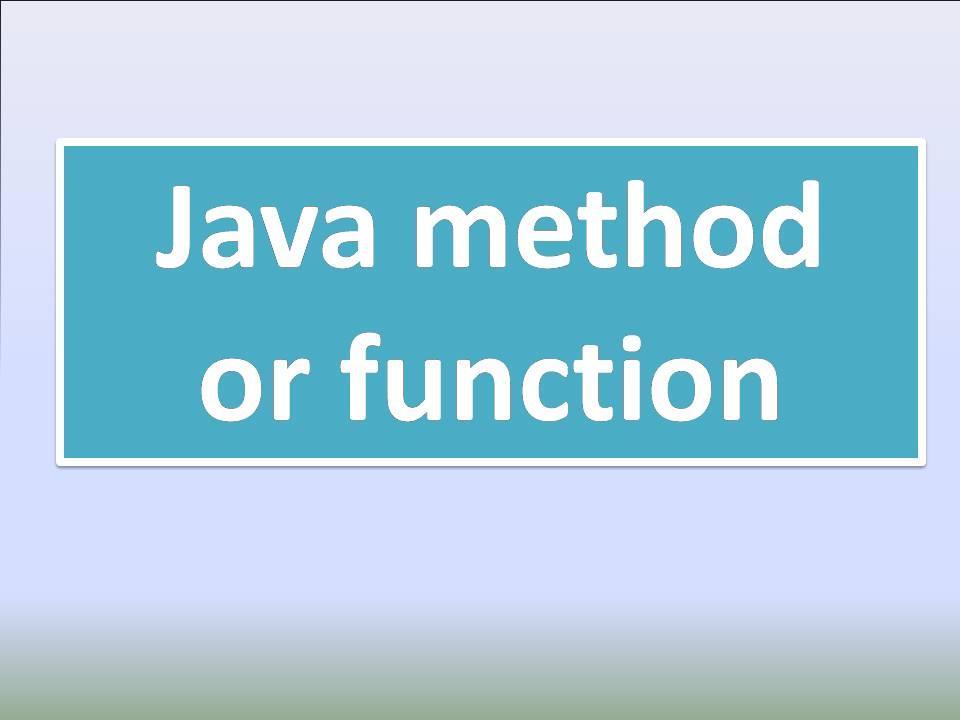Java is among the leading general-purpose and concurrent programming programs. The program has objects and classes and it provides codes to help developers to set up modules so that they can reuse some codes and it is intended to allow applications WORA (write once, run anywhere) feature. So, what is a method in Java?
Most common users develop on java for windows 10 oc, but it’s not the rule, you can use any system you want.
Well, a method in Java is a group of statements that perform operations. Each time you call a pre-determined function, including a toString(), or a logical stepwise series of codes that run in the background that is already stored and ready inside the library. Put differently, a method in Java is a container that holds different operations on various data to carry out specific tasks in the Java Code.
Developers can group Java operations and provide a name for the group, which will be the method’s name. You have to keep in mind that Java methods must be situated in the Java class. They are more similar to what we call procedures and functions in some languages such as Pascal, Javascript and C++. A Java method can be a collection of statements or a single statement performs various tasks or actions on data, which might or might not return any result.
The types of methods
Java has three main types of methods and a developer can develop a method depending on the specific scenario. Here are the three types.
The static method
Static methods are those that are called and executed without forming an object. Generally, they are used to make instance methods. Static methods are invoked directly through the class name.
The instance methods
These methods act on the class instance variables. They include accessor methods and mutator methods.
The factory methods
Factory methods are methods that return the object to the class they belong to. Every factory method is a static method.
The method declaration
Generally, method declarations have six components:
The modifier
A modifier defines the method access type. In other words, it defines where you can access the method in an application. Java has four types of access specifiers, which are public, protected, default and protected. A public specifier is accessible in every class of the application, while the protected one is only accessible within the defined class and the subclasses. The private specifier is only accessible within its defined class. Finally, the default (defined/declared without any modifier) is only accessible in the same class and package in the defined class.

The return type
The return type is the type of data value that the method returns. The return type can also be void if it does not return any value.
Method name
The method name is the field names rules that apply to method names but this convention might be different.
Parameter list
The parameter list is a comma-separated list that consists of input parameters. The parameters are predefined and preceded with the data type in an unclosed parenthesis. Absence of parameters means that you have to use empty parenthesis ().
Exception list
The exception lists are those that you expect that the method can throw. You can specify the exceptions.
Method body
The method body is usually enclosed in braces. It is the code that has to be executed so that the computer can perform the intended operations.
The method signature

The method signature consists of a parameter list and the method name – the type of parameters, the number of parameters and the order of parameters. The exception and return type are part of the method signature.
Naming a Java method
Generally, a method name is a single word that has to be a verb in the lowercase or a multi-word that starts with a verb in lower case. The verb has to be followed by a noun, adjective… After the verb, the first letter of every word has to be capitalized. For example findSum, setX, computeMax, getX.
Each method should have a unique name in the class in its defined class, but at times its methods in the same class can share names because method overloading is possible in Java. The method has to be called for with its functionality. Typically, a method is called in three situations:
It completes every statement within the method
Throws an exception
It reaches a return statement

The memory allocation for the method calls
The implementation of method call happens through stacks. Each time a method is called, the stack frame will form in the stack area and the arguments will be passed to the local variables. The local variables and the value by the called method are stored in the stack frame and if the execution. The allocated stack frame is deleted after the called method ends. The method has a register for the stack point that tracks the stack adjustments.






